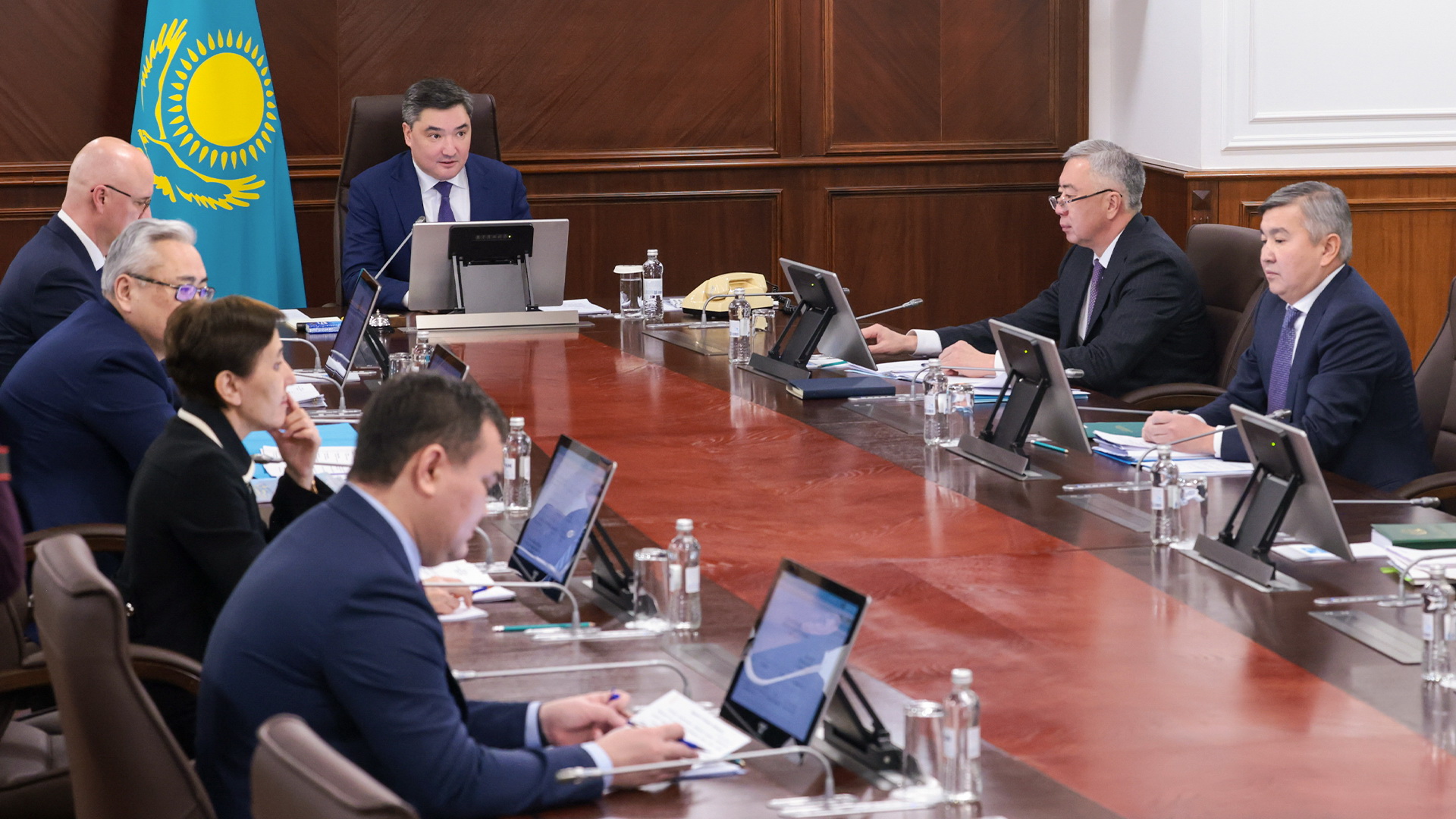ASTANA – The comprehensive development plan of Astana agglomeration for 2024-2028 was adopted at a government meeting chaired by Kazakh Prime Minister Olzhas Bektenov on Feb. 27, reported the prime minister’s press service.

Government meetings chaired by Prime Minister of the Republic of Kazakhstan Olzhas Bektenov. Photo credit:primeminister.kz
The territory of Astana agglomeration includes Astana city and over 40 settlements within three districts of the Akmola Region, including the city of Kosshy, where 40% of the region’s population resides, according to Deputy Prime Minister and Minister of National Economy Nurlan Baibazarov.
The Astana agglomeration comprehensive development plan includes 329 measures worth 1.13 trillion tenge (US$2.5 billion). The measures are aimed at urban development, modernizing social, engineering and transport infrastructure, ensuring environmental sustainability and safety, and preventing emergencies.
According to Bektenov, the primary challenges of agglomeration are the sharp increase in population in the suburbs and daily pendulum migration to the capital and back.
“This significantly increases the load on the entire infrastructure of Astana, its ecology and safety. People move to live closer to the capital. This is a natural process. However, such migration affects the labor market and contributes to the growth of unemployment in the region. Therefore, there is a lot of work to be done to solve these problems,” said Bektenov.
Over the past decade, the population of Astana has surged by 46%. Forecasts indicate that by 2035, this number is expected to reach 2.3 million people.
The suburban villages have many problems of their own, according to the Prime Minister. These include water supply and water drainage issues, stable electricity supply and road conditions.
“I believe that the implementation of the plan should solve these pressing issues. Moreover, we need to open permanent jobs in the suburbs. Astana, as the core of the agglomeration, creates prerequisites for the sustainable development of adjacent territories. This will help to smooth the existing imbalance between the living standards in the capital and nearby settlements,” he said.
Implementing the comprehensive plan requires significant investment and favorable conditions to attract it.
“It is also necessary to give economic specificity to each of the 45 rural settlements. It will provide for self-sufficiency of both the villages and Astana in the provision of the necessary livestock products, crop production and construction,” said Bektenov.


